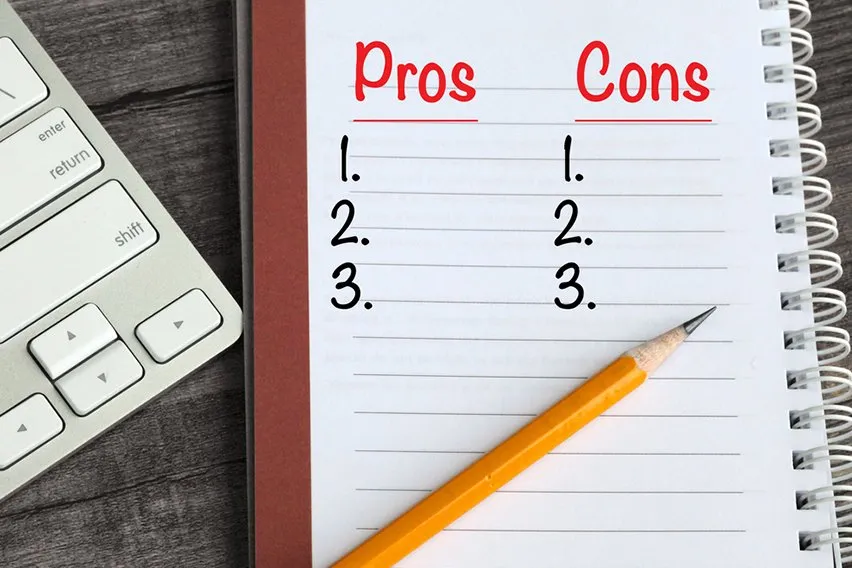How to Measure Productivity of Employees: 9 Ways

Productivity is one of the most important measurements of an employee’s success. Economists define it as the ratio of production to efficiency. In other words, how much work is the employee doing versus how much they could be doing? The more productive your employees, the more value you’re getting for your payroll.
Let’s take a simple example: manufacturing. A particular employee is responsible for inspecting the motor mounts on a lawnmower. We can easily measure how many lawnmowers that employee inspects per hour. The more lawnmowers they’re inspecting in a given period of time, the more productive they are. Of course, most jobs aren’t as straightforward, so employers have to get more creative to gauge employee productivity.
That said, you don’t have to blaze your own trail. Companies have already come up with several tried and true methods for measuring the productivity of their employees. Here are nine important tips.
Here’s What We’ll Cover:
Why Is Measuring Employee Productivity Important?
5. Consider Each Employee’s Role
Why Is Measuring Employee Productivity Important?
Before we talk about how to measure productivity levels, let’s talk about why they’re important. For one thing, productivity is a huge part of employee performance. It lets you know who your top performers are, and which team members aren’t pulling their weight.
Productivity measurement also has important implications for project management. You can’t estimate how long a project will take if you don’t know your average employee output.
Along the same lines, productivity doesn’t just affect an individual employee. If one employee is not productive, it could hold back overall team productivity. To return to our lawnmower example, the lawnmowers cannot be sold without being inspected. If the inspector is slow, it doesn’t matter how fast the rest of the assembly line is. In this way, employers can identify bottlenecks, and determine when to hire new staff.

1. Define “Productivity”
So far, we’ve been using the example of an assembly line employee. But most positions don’t produce the same kind of tangible results. A good example of a job that’s hard to quantify is a customer service position. Imagine someone on a phone call for an hour, helping out an angry customer. If that customer ends the phone call as a satisfied customer, it’s time well-spent.
That’s why companies sometimes ask their customers to take surveys. If a customer service representative is consistently scoring high marks, you know they’re being productive.
2. Define Your Baseline
Once you know what you’re measuring, you need to establish a baseline. How productive is your average employee? How productive is your most productive employee? Your least productive? Answering all of these questions will tell you what your baseline is.
In a small business, you can do this on the basis of total company productivity. Let’s say you run an auto shop with five mechanics. Take your total income from the month and divide it by the number of employees. That number is your average employee productivity.
3. Define Your Goals
After you’ve established a baseline, you can start setting goals. With your average in mind, decide how productive you want your employees to be? Knowing your desired productivity allows you to offer incentives. For example, you could offer a bonus for employees with the highest productivity metrics.
At the same time, it’s important to be realistic. For manual workers or tradespeople, there’s a physical limit to how fast a person can work. For customer service workers, customer interactions take as long as they’re going to take. If you pushed them to take too many calls, they might start rushing your customers off the phone. Make sure what you’re asking your employees to do is reasonable and logical.
4. Look for Redundancies
When you dig into your metrics, look for redundancies. These are tasks or routines that are performed more often than necessary. A good example is service technicians returning to the shop for supplies. If a field employee is spending half their time back at the shop, you may need to rethink their field kit.
Another good example is routine office tasks. For example, sending email reminders and other repetitive activities. Good automation software can eliminate a lot of these tasks altogether. That way, your human employees will be focusing on tasks that require a human being.
5. Consider Each Employee’s Role
It goes without saying that not all employees have the same role. You need to make sure you’re measuring their productivity in terms that are relevant to their job. For example, a project manager would have different metrics from a team member working on a particular task.
That said, it can sometimes make sense to compare employees from different groups. It allows you to see how employees are spending their time, and what resources different employees are using. For example, are your salespeople and customer service representatives using the same channels? Or are sales happening over the phone while customer service is handled via email? This can help you provide your customers with a more consistent experience.
6. Track Individual Progress
After you’ve identified and eliminated redundancies, you’re ready to start tracking individuals. This is the part of the process where you use metrics to determine employee reviews. It can also help you to identify employees who are facing unique challenges. For example, a salesperson might have stiffer competition in their territory than their peers do in theirs.
Time tracking software is hugely helpful here. As a matter of fact, it’s a key part of most companies’ productivity measurement programs.
7. Involve Your Employees
As a leader, it can be easy to lose touch with the day-to-day realities of your employees’ jobs. As you measure productivity, make sure to listen more than you talk. If your employees aren’t meeting their metrics, find out why. You may find out that you’re not even measuring the right thing.
Along the same lines, it’s important to be consistent. If you expect your sales team to make a certain number of calls per day, hold them accountable. And don’t hesitate to encourage your employees with a “how’s it going?” Not only will they know you’re paying attention, they’ll let you know if they’re having trouble.

8. Remember the Human Factor
At the end of the day, we are all human beings. Your employees aren’t automatons who mindlessly crank out work. They need to be motivated, and it’s your job as a leader to provide that motivation. It’s no secret that many companies offer bonuses to top performers; this is why.
Motivation also requires employees to have a real personal connection to leadership. This doesn’t mean you have to be everybody’s best friend. It means leading by example, and letting them know you’re there to help them do their jobs.
Finally, individual employees may have their own unique issues. A salesperson might have a bad quarter; as it turns out, their child is suffering from cancer. If you know this person is a good employee going through a tough time, you’ll hang onto them.
9. Ask for Feedback
When measuring the productivity of employees, keep them involved in the process. Ask them what metrics they think are important. You might be surprised what you find out!
Not only that, but asking for feedback keeps your employees engaged. They feel like they’re a part of the process, rather than being dictated to.
Key Takeaways
No matter how you measure productivity, remember that no one metric is perfect. You need to consider each employee as an individual, and what they contribute to the company. That said, good metrics are an important part of running a successful business.
For more business tips and tricks, head over to our resource hub. There, you’ll find dozens of guides to productivity, project management, and communication.
RELATED ARTICLES
 A Guide to Web Design Project Management & 5 Best Softwares
A Guide to Web Design Project Management & 5 Best Softwares 5 Best Time Management Games
5 Best Time Management Games 5 Best Time Management Books for More Productivity
5 Best Time Management Books for More Productivity How Many Hours a Week Should I Work: Ideal Hours To Work
How Many Hours a Week Should I Work: Ideal Hours To Work 9/80 Work Schedule: Pros and Cons
9/80 Work Schedule: Pros and Cons